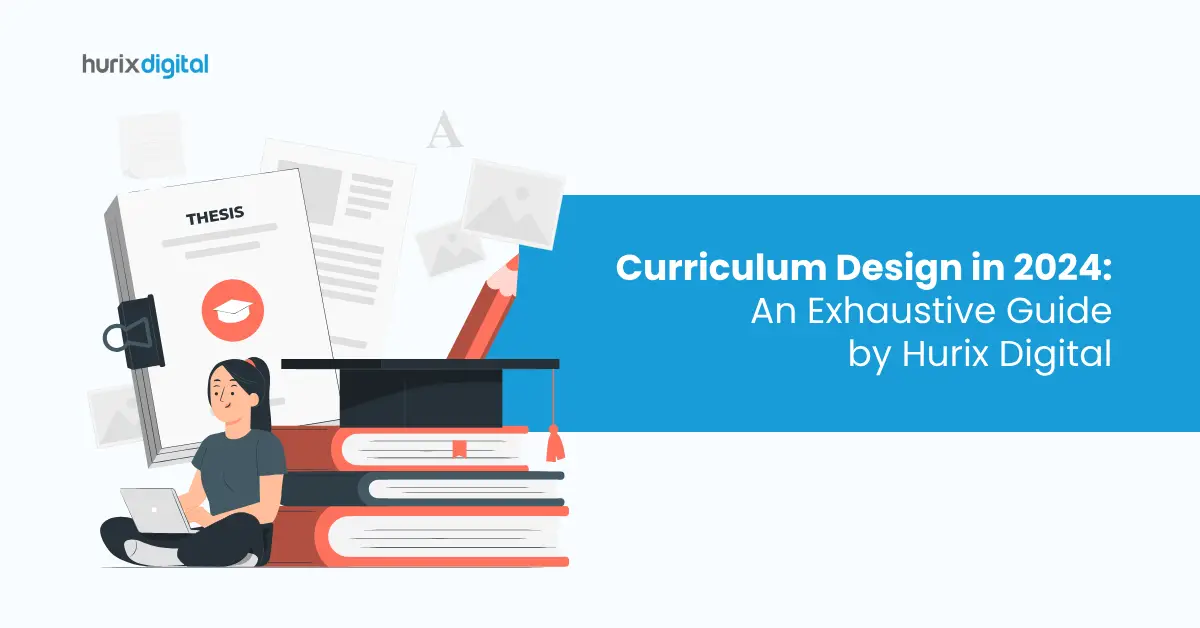
A Provost’s Guide to Effective Curriculum Design & Compliance
Summary
This article provides insights on curriculum alignment for higher education institutions to achieve accreditation, covering the importance of compliance, essential components, and best practices to ensure quality education.
As a Provost, you are at the helm of curriculum alignment, a pivotal responsibility that shapes your institution’s future and reinforces its reputation. Meeting compliance standards and securing accreditation are not just formalities—they are critical commitments to delivering quality education that impacts students’ lives.
In short, achieving compliance is not just about ticking off items on a checklist; it is a promise to advance the cause of academia while preserving—no, expanding—the respect that this body earns in society. This alignment ensures that education is purposeful and practical and prepares one for careers in today’s fast-paced and changing world.
Moreover, aligning curriculum with institutional goals and effectiveness requirements does more than ensure compliance. It transforms educational approaches, fosters critical learning, and empowers students to excel.
Yet, curriculum design and compliance can be complex. This guide offers essential tools, actionable insights, and strategies to simplify the process and bolster your institution’s strengths. Together, let’s aim to meet standards and set new ones, ensuring your institution thrives and delivers on its promises.
Table of Contents:
- What Does Accreditation Mean for Your Institution?
- What is Curriculum Alignment?
- Why Compliance is Key in Curriculum Design?
- Core Components of a Compliance-Aligned Curriculum
- Actionable Strategies to Align Curriculum with Compliance
- Best Practices for Sustaining Institutional Accreditation
- Wrapping Up
What Does Accreditation Mean for Your Institution?
Accreditation signals that an institution adheres to high standards in curriculum design and faculty qualifications. It can also significantly impact enrollment and federal funding eligibility.
Key Accreditation Standards for Curriculum Design
- Institutional Standards: Ensure alignment with national and international benchmarks.
- Rigorous Academic Standards: Ensure course rigor matches academic expectations and enhances critical thinking.
- Measurable Learning Outcomes: Define and evaluate specific learning outcomes to meet institutional effectiveness standards.
Accreditation is not a one-time achievement. It requires constant alignment with compliance standards when seeking reaccreditation and as an ongoing institutional practice.
What is Curriculum Alignment?
Curriculum alignment ensures that what is taught in each course supports the institution’s mission and meets accreditation standards.
It refers to strategically matching course content and teaching methods with learning outcomes. This alignment must demonstrate relevance and readiness for today’s workforce for institutional accreditation.
An aligned curriculum ensures every course module and objective supports compliance standards. It reflects the quality of education and prepares students for future challenges.
Why Compliance is Key in Curriculum Design?
Adherence to curriculum design is important for the preservation of accreditation and the respectability of an institution.
Accreditation bodies set standards to ensure educational quality, covering curriculum, faculty qualifications, and student outcomes. Non-compliance can result in penalties, loss of funding, or even accreditation, severely affecting the institution’s stability and reputation.
Once again, the significance of accreditation is clear regarding access to funds to support education. For example, in the U.S., federal student aid is available to students only if they have enrolled in an accredited institution. This has implications for student numbers and their reach.
Adhering to compliance standards shows a commitment to quality education and building trust with students, parents, and employers. It also assures prospective students that programs meet rigorous standards, preparing them for successful careers.
Also Read: 5 Innovative Ways to Utilize Alternative Credentials in Education
Core Components of a Compliance-Aligned Curriculum
A compliance-aligned curriculum establishes a framework that balances institutional goals with regulatory compliance. Below are the key elements:
1. Clear Learning Objectives
Define measurable objectives for every course. For instance, rather than a broad goal like “understand environmental science,” use specific outcomes like “analyze the impact of global warming on ecosystems.” This approach meets compliance requirements by providing tangible learning outcomes.
2. Industry-Relevant Content
Courses must reflect current trends and industry demands. In a recent survey, 86% of U.S. employers valued candidates with practical, industry-aligned education. Regular updates to course content keep it relevant and compliant with accreditation standards.
3. Reliable Assessment Methods
Use assessments that evaluate students’ knowledge consistently. Consider using formative assessments, such as quizzes and feedback forms, to monitor student progress. Summative assessments, like projects and final exams, validate overall course understanding.
Rigorous and fair assessment strategies reinforce credibility and compliance. They demonstrate a measurable level of academic excellence.
4. Transparent Documentation
Maintain thorough records of feedback loops and assessment results. Compliance requires that curriculum changes and their justifications are documented transparently.
This provides evidence of compliance standards in practice and builds accountability, a cornerstone of institutional accreditation.
Actionable Strategies to Align Curriculum with Compliance
To effectively align curriculum with compliance, institutions must adopt proactive, structured strategies that enhance curriculum quality and ensure adherence to standards.
Here are some actionable strategies:
1. Implement Regular Curriculum Audits
Audits allow you to identify outdated content and address gaps in your curriculum. Conduct curriculum audits annually and involve diverse stakeholders like faculty and accreditation experts.
Checklist for Curriculum Audits:
- Are learning outcomes measurable and relevant?
- Is the course content current and aligned with compliance standards?
- Do assessments measure the intended learning outcomes effectively?
2. Engage Stakeholders in Curriculum Development
Collaboration with faculty, industry professionals, and students offers a broad perspective on curriculum effectiveness.
Stakeholder Engagement Tactics:
- Host regular meetings to review curriculum relevance.
- Invite industry professionals to provide insights.
- Gather student feedback to align with student needs and expectations.
3. Utilize Data Analytics
Tools like dashboards and predictive analytics help monitor trends and identify areas for improvement. For example, tracking student outcomes in courses with high failure rates can reveal areas needing adjustment.
Analytics help improve curriculum design and provide measurable results to accreditation bodies.
Key Data Points for Compliance:
- Student retention rates
- Graduation rates
- Course pass/fail rates
4. Continuous Professional Development
Offer faculty training on compliance standards and emerging teaching methodologies. When faculty are well-versed in regulatory requirements, they can design courses that meet compliance goals, ensuring consistent curriculum quality.
Topics for Faculty Training:
- Assessment methods and alignment with learning outcomes
- Updating curriculum to meet industry standards
- Compliance with federal and regional regulations
Best Practices for Sustaining Institutional Accreditation
To maintain institutional accreditation effectively, adopting sustainable practices that foster ongoing compliance and quality improvement is essential. Below are key strategies to achieve this:
1. Create a Compliance Oversight Committee
A compliance-focused committee can regularly review and update curriculum alignment, track new regulations, and support faculty in meeting compliance standards. The committee should consist of representatives from various departments for balanced oversight.
2. Benchmark Against Leading Institutions
Compare your curriculum against those of peer institutions. For instance, benchmarking against Ivy League standards can reveal areas for improvement and establish a high bar for institutional effectiveness.
3. Align Curriculum with Institutional Mission and Vision
Accrediting bodies often assess how well the curriculum supports the institution’s strategic objectives. Ensure each course module reflects your institution’s goals and mission. This alignment makes it easier to meet accreditation expectations.
4. Implement Automated Compliance Solutions
Technological advancements are making compliance easier. Automated solutions track curriculum changes, provide reminders for audits, and create detailed reports for accreditation.
Platforms that monitor and report curriculum compliance allow for efficient updates and record-keeping, easing accreditation reviews.
Also Read: WCAG 508 Compliance for eLearning Platforms: Best Practices for Higher Education
Wrapping Up
Curriculum alignment is not a one-time task but a continuous commitment. It demands collaboration, regular updates, and strategic planning.
By following best practices and adopting compliance-focused technologies, you can ensure your curriculum meets accreditation requirements. Remember, compliance and alignment are not just about meeting standards—they represent a dedication to educational excellence.
Do you need help with curriculum compliance? Hurix Digital can help! Our Higher Education Solutions offer tailored support for curriculum design, making compliance easier.
Our innovative platform streamlines curriculum alignment, documentation, and stakeholder engagement, ensuring you meet compliance standards. Reach out to us to explore how we can support your institution’s success.

Senior Vice President
A Business Development professional with >20 years of experience with strong capability to sell new solutions and develop new markets from scratch. New Market Entry Specialist with experience of working in two of the largest emerging markets – China & India. Also covered other key markets in APAC, US, EU & ME. Exceptional experience of conceptualizing, ideating and selling new learning technologies like VR AR, etc. across multiple industry verticals.








